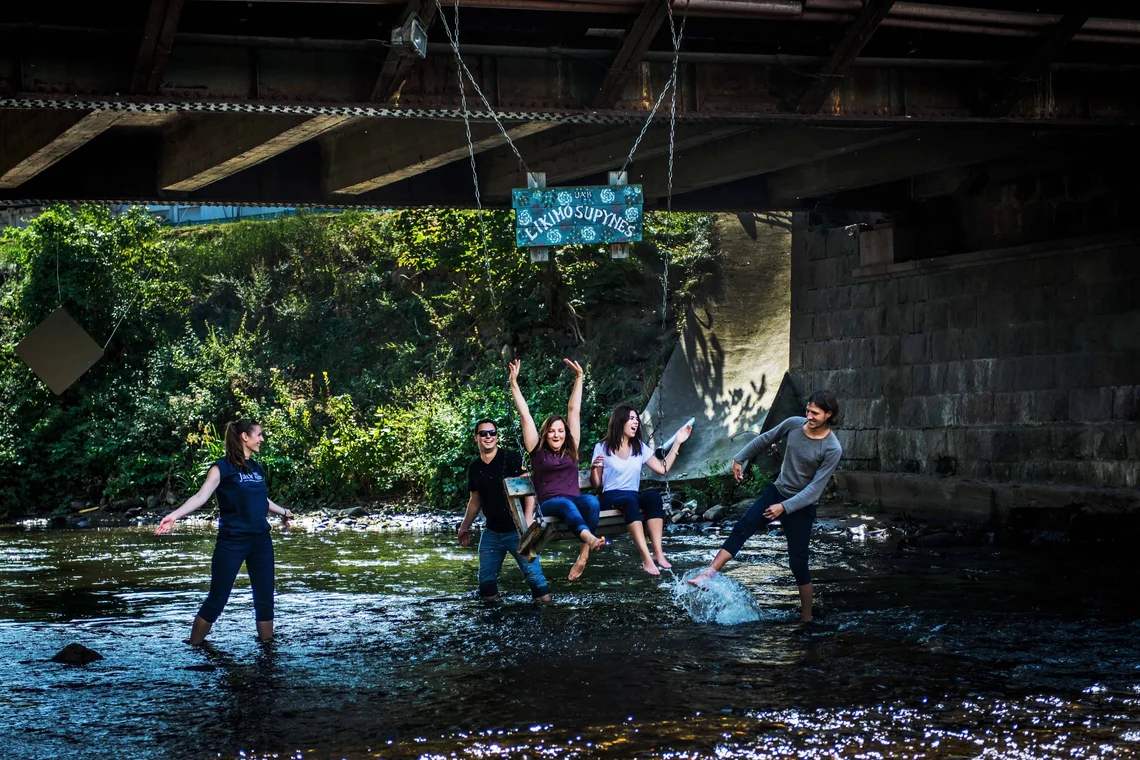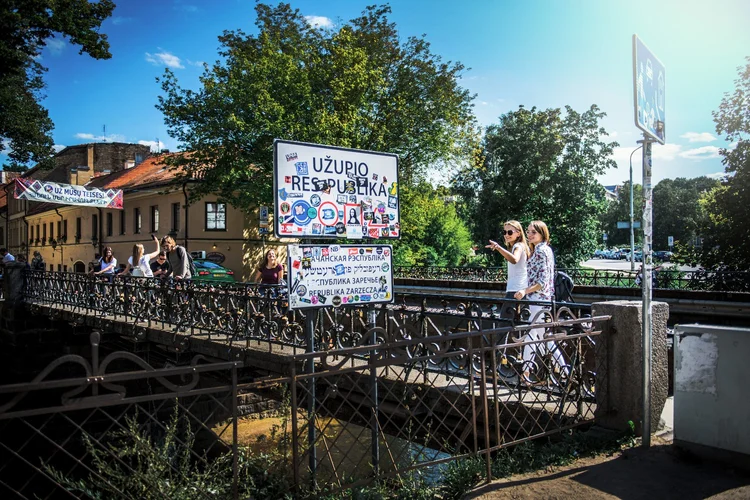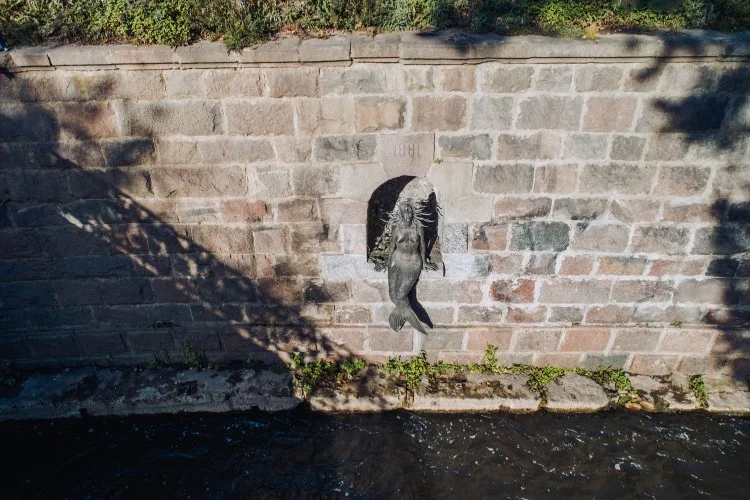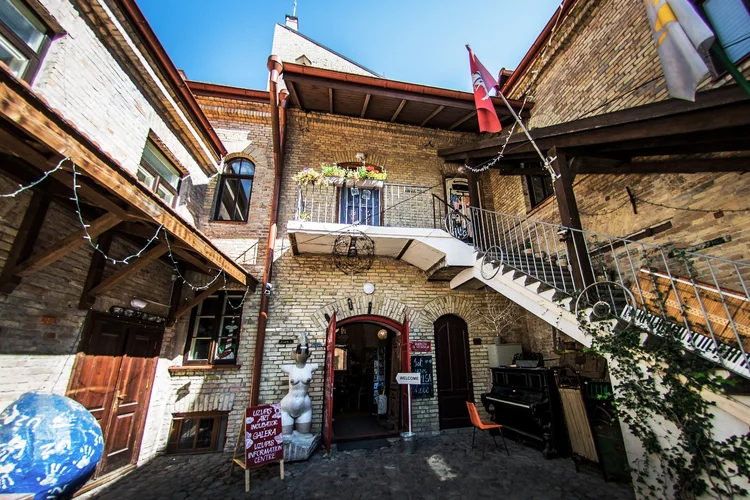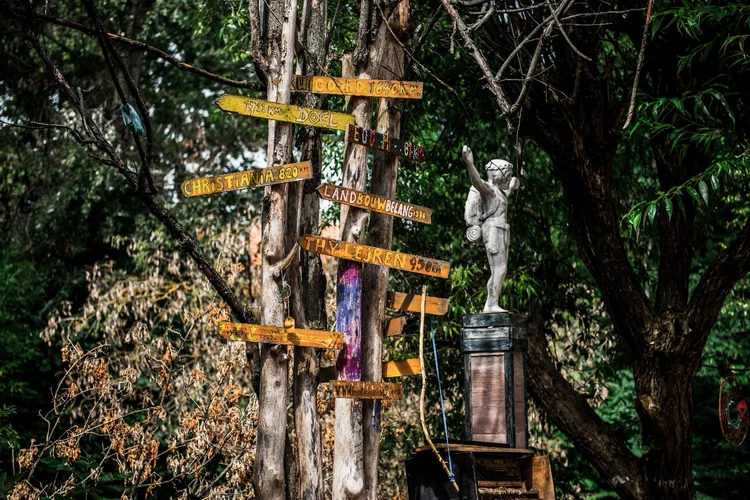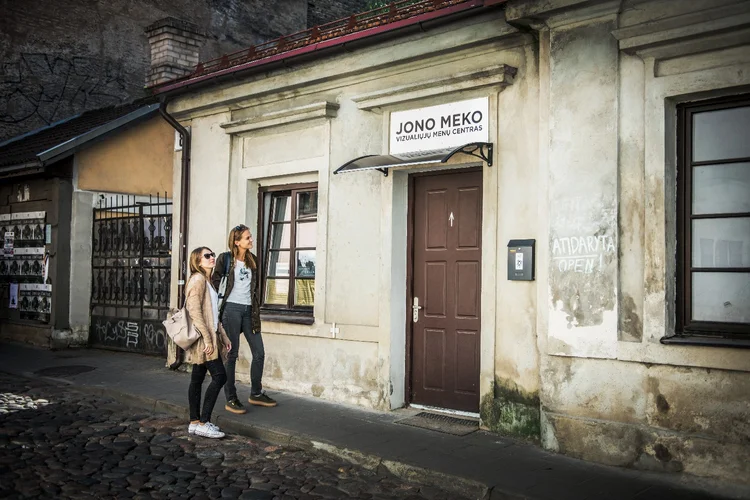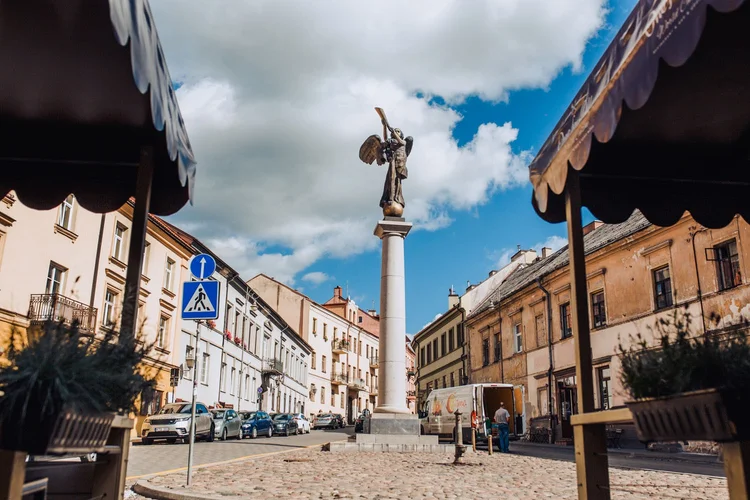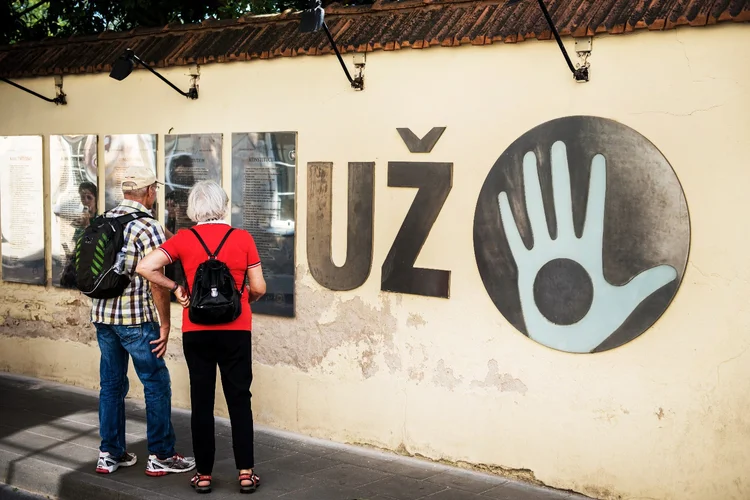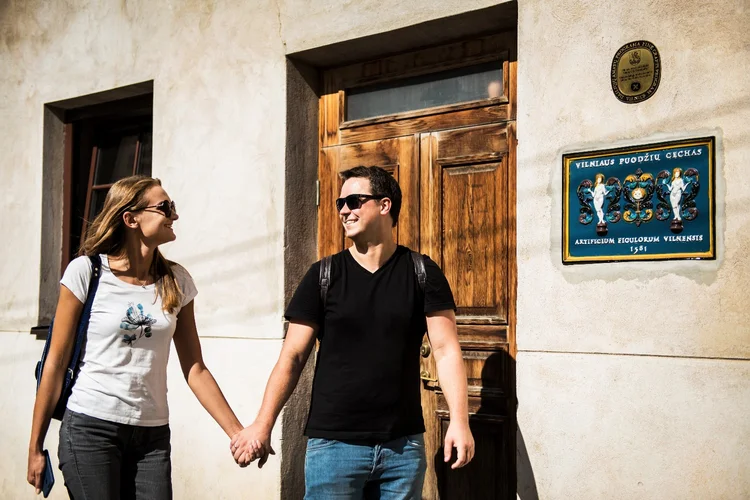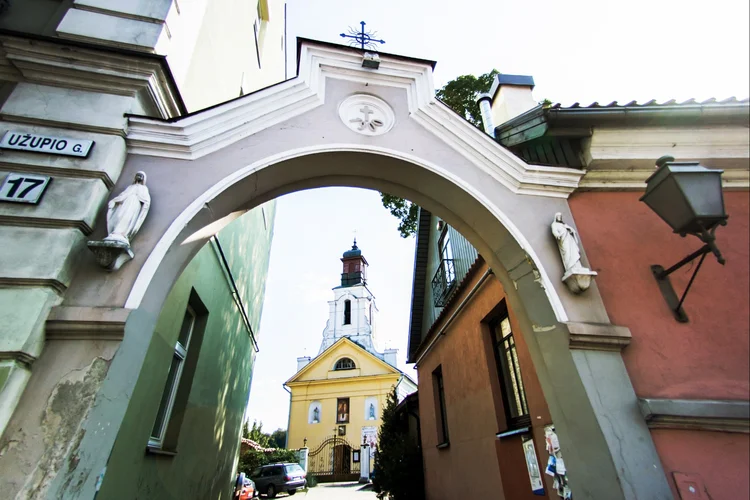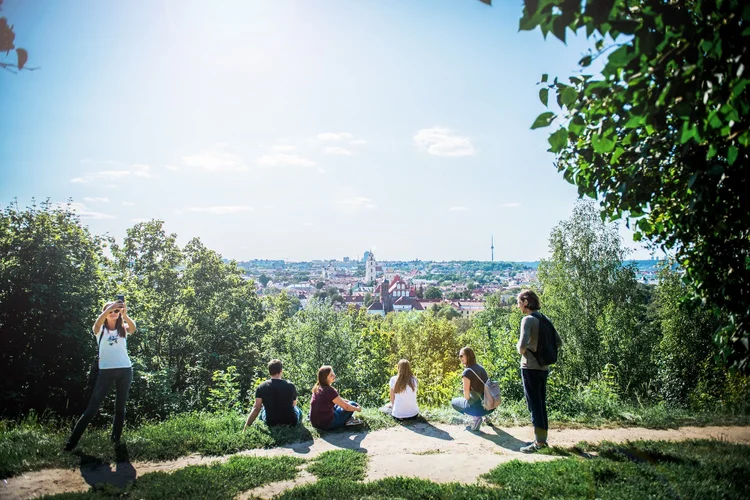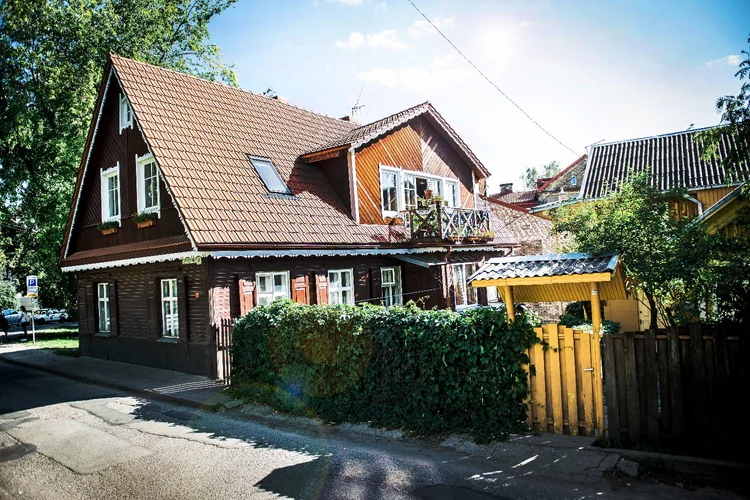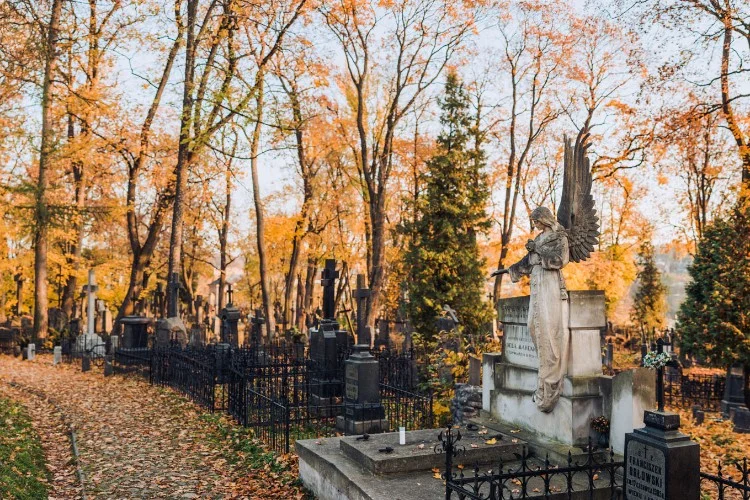Užupis: a Republic Inside Vilnius
Užupis is the smallest district in Vilnius, covering an area of 0.6 km² and separated from the Old Town by the Vilnelė River. What used to be a seedy part of the city in the early 90s has grown into an affluent neighbourhood of artists, intellectuals, and a few local moguls. The district declared independence on 1 April 1997, as if to underline the humorous nature of the whole affair. However, the new republic comes complete with its own currency, government, anthem, constitution and an ever-present free spirit.
Crossing the Užupis Border
Just like any other republic, Užupis has a border crossing. Visitors can head to the Bridge of Užupis to see the district’s main entrance. Moreover, April 1 is the Užupis Independence Day, and the bridge is where you can get your passport stamped upon entry. And on all other days you can get this stamp immediately at the border point behind the bridge and in Užupis information center "Užupis 1 point". And all year-round the bridge is the prime spot in Vilnius for placing love locks.
Under the Užupis Bridge
If the river is favourable, you can test your destiny under the Užupis Bridge by going on the Destiny’s Swing. While swinging, discover another well-kept secret – the Mermaid or Užupis’ Maiden. She took a dive once in the flood of 2004 but she’s back safe in a niche along the quay. Beware, legend has it that if you look at her long enough she might seduce you to stay in Užupis forever.
Magnets and Miracles. Curiosity Room
If you suddenly feel drawn to Užupis, it’s no miracle. Step into the Curiosity Room – Užupis’ tourist and information centre – and the photos, artefacts, and stories about the district will work their magic on you. Get a little something to remember, send a postcard off to a friend with the rare Užupis stamp on it, or ask a local about the curiosities in the neighbourhood.
Sculptures at the Užupis Art Incubator
In 1996, a group of students from the Vilnius Academy of Arts founded an artistic community based out of a house and yard next to the Vilnelė River. It gained support among locals and city officials; therefore, in 2002 the artist community joined hands with the Vilnius City Municipality to establish the Užupis Art Incubator. The UAI is known for its display of sculptures that changes from time to time. Go there to see works that surprise, inspire, make you laugh, or even feel a little uncomfortable.
Bernardine Monastery
Once famed for its extensive library, today the monastery is a home to the Vilnius Academy of Arts. The atmosphere is liberal, creative, and filled with good vibes. Right across the river from the former monastery is the Tibet Square with a mandala sculpture. Cross the river to Užupis over a nameless bridge burdened with love locks of the couples marrying nearby.
Jonas Mekas Visual Arts Center
Named after the legendary filmmaker Jonas Mekas, an Honorary Citizen of the Republic of Užupis, the centre bears the flag of the avant-gardes of all the arts. It houses works by Jonas Mekas and Jurgis George Mačiūnas, the forefathers of the contemporary art movement Fluxus, as well as temporary exhibitions by other contemporary artists who experiment with mixed media. Join an educational project and find out more about the essence of Fluxus.
Angel of Užupis
Urban legend has it that placing a sculpture of an angel here was a suggestion made by the Dalai Lama on one of his visits in town. But in reality the idea for a sculpture of an angel came when locals were looking for a way to commemorate Zenonas Šteinys, an artist and active member of the local community. He was one of the people who helped turn a once unsightly and dangerous district into the Užupis we know today – a real guardian angel.
The Constitution of Užupis
How do you describe Užupis’ bohemian way of life in one manifesto? Take a look at the Užupis Constitution to find out. Its 41 articles will help you understand what goes on in the heads of locals – ‘Everyone has the right to be unique’ is indeed true in the neighbourhood. The constitution was written by Romas Lileikis and Tomas Čepaitis in just three hours and published on a plaque on Paupio Street.
Now translated into more than 50 languages, the constitution gives visitors a sense of the rules the locals of Užupis swear by. Because, ‘Everyone has the right to live by the River Vilnele, and the River Vilnele has the right to flow by everyone.’
Vilnius Potters’ Guild
The ancient art of pottery is revived in this small studio. Using tools from the Middle Ages, the guild masters reconstruct ceramic items according to archaeological findings. Drop by and see the permanent exhibition; the founders of the guild are eager to tell visitors many stories. The best way to learn about their history is by sipping coffee from a reconstructed mug and even trying your hand at making one.
St. Bartholomew’s Church
Standing here since 1824, the church is so tiny it almost blends in with the nearby houses. Find it and you will be rewarded with a wonderful view from the top of the hill. During the Soviet era the church was turned into a sculpture workshop. Today, it’s home to a small Belarusian Catholic community and mass is held in Polish and Belarusian
Altana Hill
One of the highest hills in Vilnius got its name from a garden feature – an altana that you can still see standing here today. It was built by Vilnius native Melanija Dluska around 1933 and used by her husband to grow exotic plants under. Although the city council never gave her permission for the structure, that didn’t stop her. The view from here is spectacular and there’s not much climbing if you just get to the Užupis Gymnasium and take the stairs and path behind it.
Wooden Architecture
Don’t be alarmed if you think you’ve wandered to a remote village. You’re yet in another eccentric part of Užupis. Feel time stand still on Baltasis Skersgatvis. The street’s wooden houses and gardens embody the long history of the district. You can see what the first houses in Užupis looked like.
Bernardine Cemetery
Even though visiting a cemetery might not be at the top of your sightseeing list, the Bernardine Cemetery is worth a visit. Since the cemetery resembles a park, it was always a popular place to go for a walk in the 19th century. Established in 1810, the cemetery serves as a resting place for many famous people, such as painters Kanuty Rusiecki and Vytautas Kairiūkštis, as well as Professor Leon Borowski.

